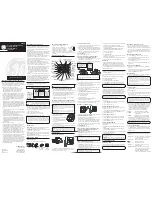
36
Configuring the phone via the Web configurator
Voice Settings
You can set various parameters for voice transmission, e.g., the compression
method (codec) to be used. These parameters should only need adjusting if so
required by the SIP gateway or SIP proxy you are using. Please note the corre-
sponding manufacturer's documentation in this regard.
The voice quality for VoIP connections is generally determined by the
voice
codec
used for transferring the data and the available
bandwidth
of your
DSL connection.
In the case of the voice codec, the voice data is digitalized (coded/decoded) and
compressed. A "better" codec (better voice quality) means more data needs to
be transferred, i.e., perfect voice data transfer requires a DSL connection with
a larger bandwidth.
The following voice codecs are supported by your phone:
G.711/Alaw / G.711/Ulaw
Excellent voice quality (comparable with ISDN). The necessary bandwidth is
64 kbit/s per voice connection.
G.729
Average voice quality. The necessary bandwidth is less than or equal to
8 kbit/s per voice connection.
iLBC
Average voice quality. The codec works with 30 ms or 20 ms blocks.
The transmission rate is 13.33 kbit/s (30 ms blocks) or 15.2 kbit/s
(20 ms blocks).
G.722
If you register an HDSP capable handset (HDSP= High Definition Sound
Performance) with your base station, the calls you make using the handset
via G.722 VoIP connections will have a fantastic sound quality.
Gigaset handsets S67H and SL37H, for example, are HDSP capable.
The
G.722
broadband
voice codec works at the same bit rate as G.711
(64 kbit/s per voice connection) but with a higher sampling rate.
Both sides of a phone connection (caller/sender side and receiver side) must
use the same voice codec. The voice codec is negotiated between the sender
and the recipient when establishing a connection.
















































